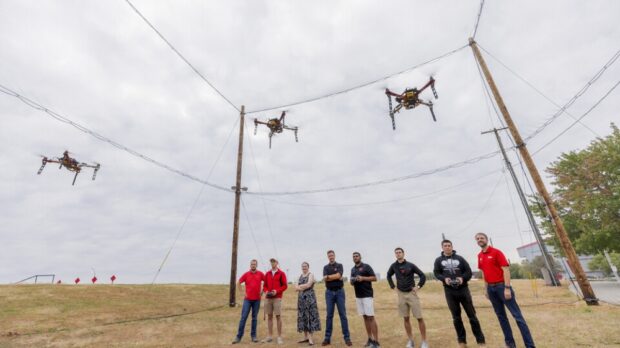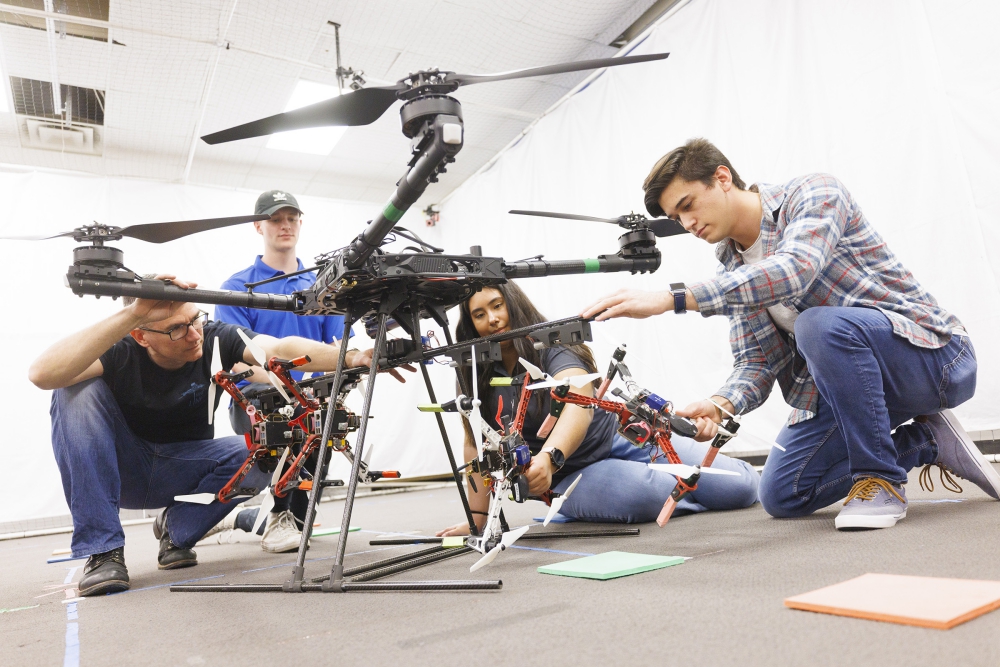Led by Justin Bradley, the Nebraska Intelligent MoBile Unmanned Systems Lab at the University of Nebraska–Lincoln is working to develop an algorithm to control drone swarms for intelligence, surveillance, target acquisition and reconnaissance missions.
The $250,000 project through the National Strategic Research Institute at the University of Nebraska will leverage the lab’s custom-built “mothership” drone, years of experience and desire to take on the challenge of real-world limitations.
The work is funded by the U.S. Army Combat Capabilities Development Command Army Research Laboratory, which is looking to swarming technology to be able to execute time-consuming or dangerous tasks using unmanned aerial systems.
“This is really exciting to me because I’ve always been interested in multi-agent development, but I’ve always viewed the limitations of the indoor experimentation as something that we really need to overcome if we want to deploy properly robust, decentralized swarms,” said Bradley, an associate professor of computing who also serves as an NSRI Fellow. “This will take us toward that in a big way.”
Through this project, coordinated multi-agent autonomous swarm deployment will be put to the test. The aim is for the NIMBUS mothership to drop several “baby” drones in flight while several other drones take off from the ground. The mothership, with an onboard camera system, will identify and track the swarming drones. Ground- and air-based radars will be used to attempt to identify and track the swarm as part of a counter-UAS effort.
Ultimately, the goal is for the drones to coordinate their activities to execute certain tasks, such as surveying a particular area, communicating data with each other and returning to a pre-determined location for landing. The trick is, as Bradley put it, doing all of this with no access to wifi, outside in uncertain environments and with less expensive, off-the-shelf equipment that deliver lower performance.
Going into the project in spring 2022, the NIMBUS team had just earned a significant milestone with a full 10-vehicle demonstration, providing a basis for the work of this project that seeks more sophisticated capabilities.
“What I think we do special is that we identify issues from the implementation, from our experience deploying systems,” Bradley said. “Then we bring that back to the design table and leverage that information to redesign algorithms that are informed by the implementation.”
Beyond the goal of demonstrating significantly enhanced swarming capabilities, the project is also providing an exceptional experience for several students from the Nebraska College of Engineering. Five doctoral students and two undergraduate students are contributing to the research, development and field experimentation required for this effort.
“We can attest to the impactful work of the NIMBUS Lab from several other projects in which these leading Nebraska researchers have delivered important products to defense customers,” said Maj. Gen., USAF (Ret.) Rick Evans, NSRI executive director. “What is particularly rewarding about this work is not only the cutting-edge deliverables but how it can move this area of research and application forward while providing very rewarding experiences to students.”
Photo: Craig Chandler | University Communication and Marketing
Source: Press Release


